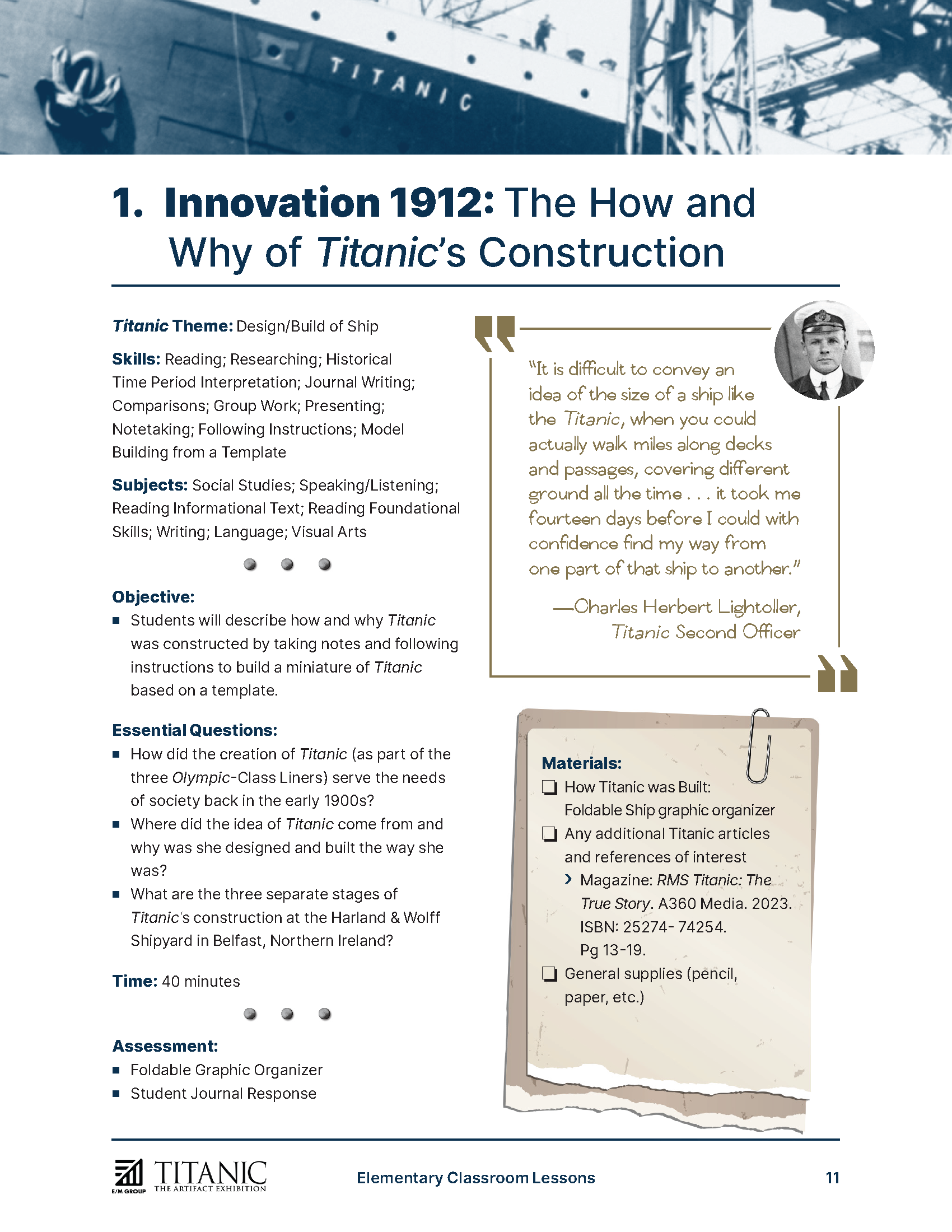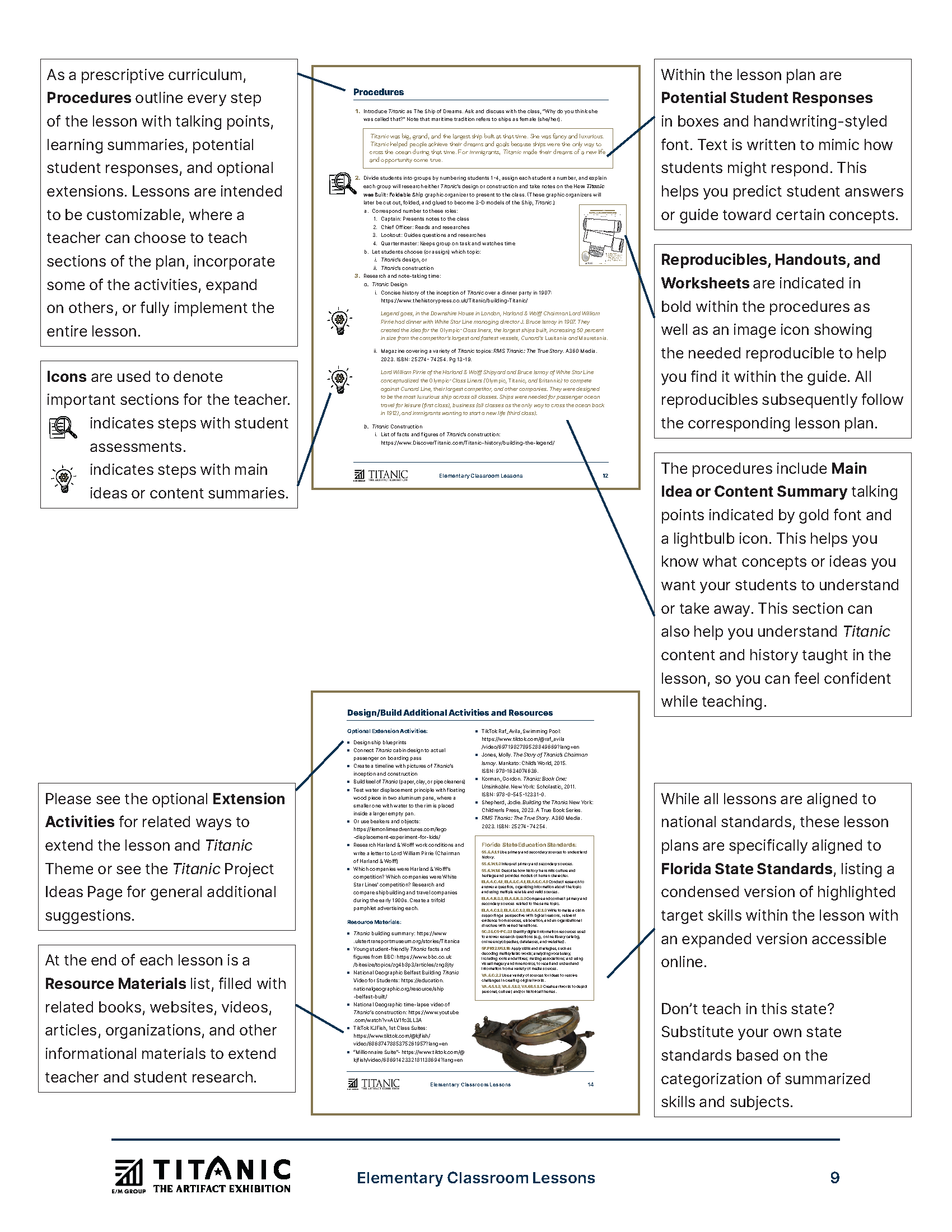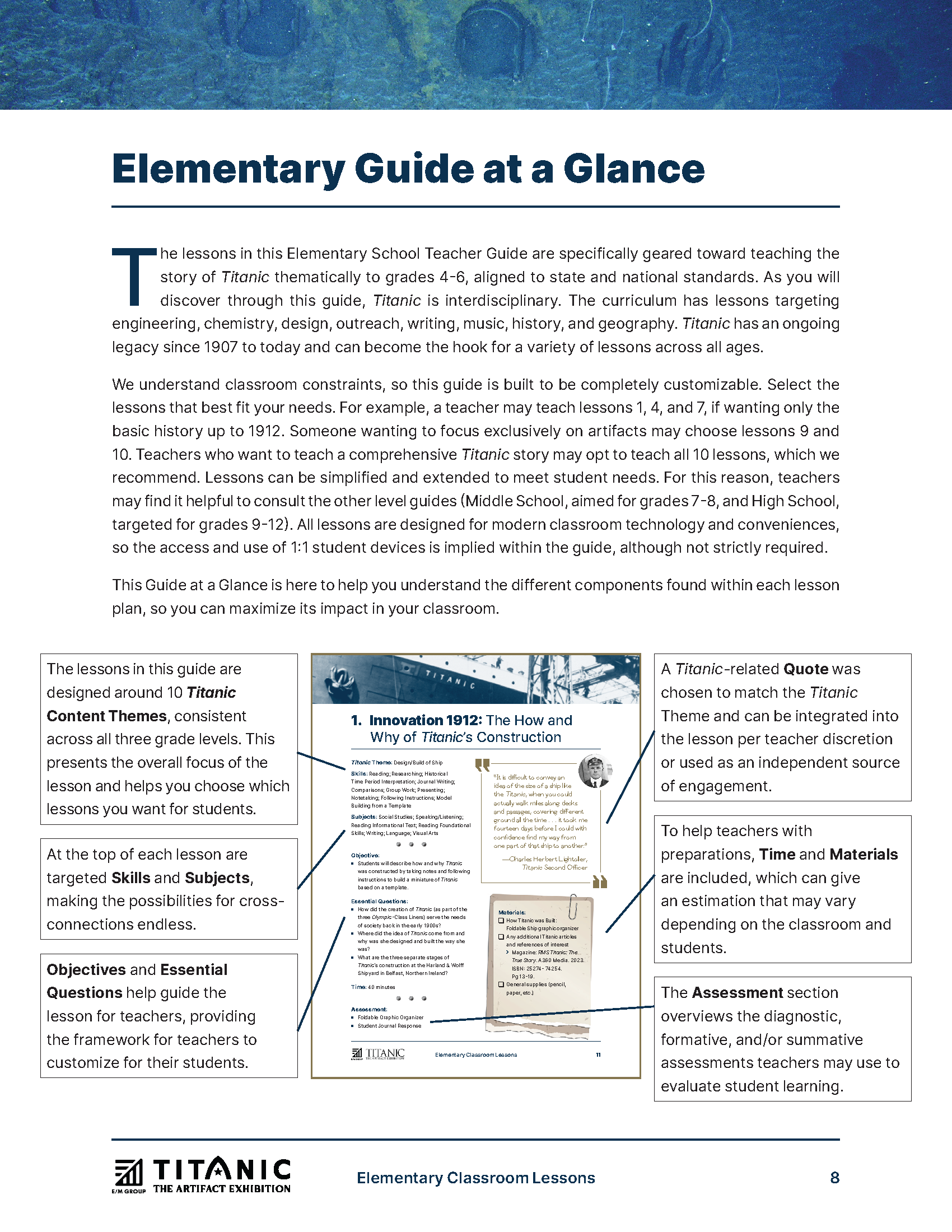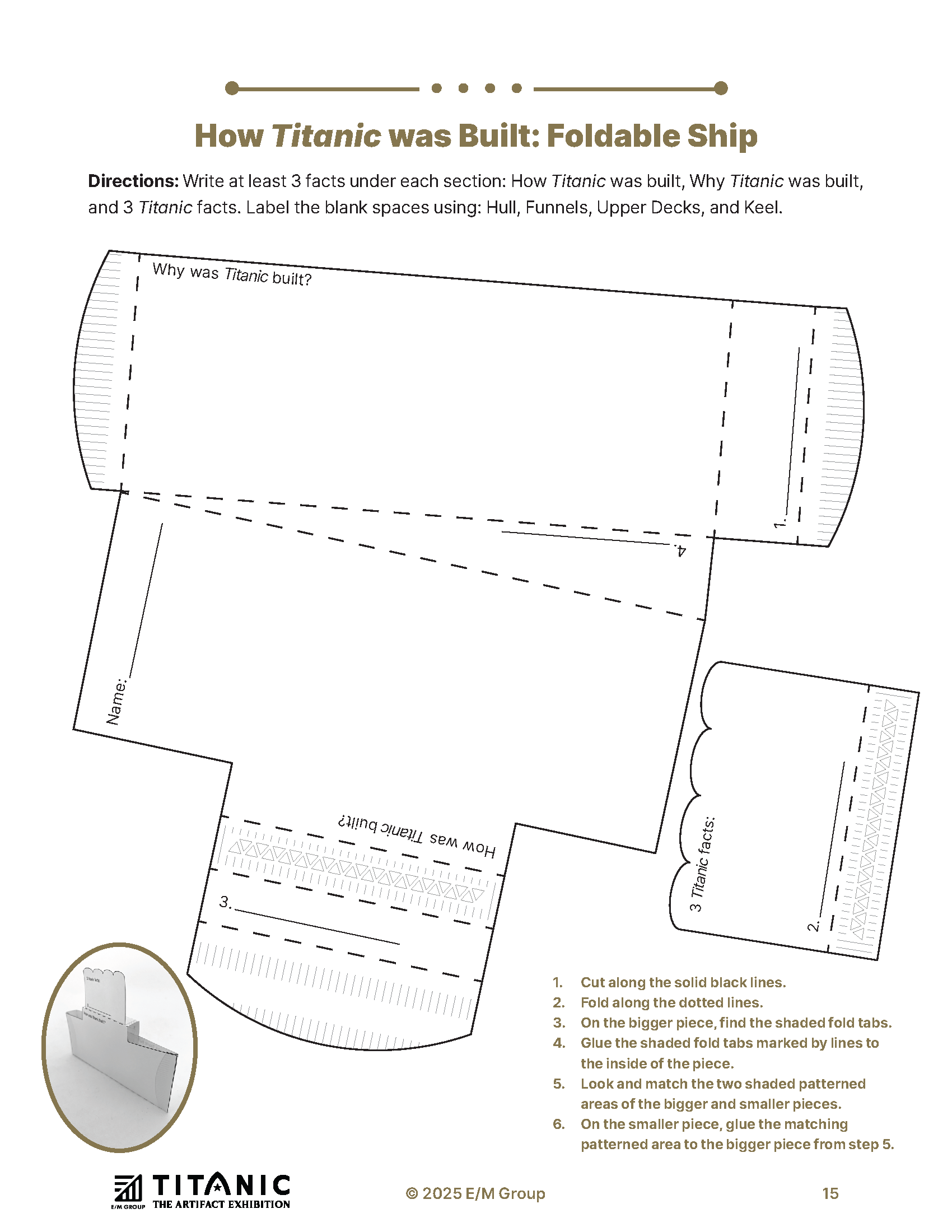Have you ever wanted to teach Titanic—not just as a historical event, but as a gateway to science, design, geography, human stories, and timeless lessons?
As a new school year begins, we know teachers everywhere are planning lessons, building curricula, organizing classrooms, and preparing for another year of meaningful learning. During such a busy time, it can be hard to find teaching resources that are both engaging and easy to implement.
That’s why we created the Titanic Teacher Guides, a set of free ready-to-use curriculum materials designed for grades 4–6, 7–8, and 9–12. These guides were built to support real classrooms with thoughtful, cross-curricular, standards-aligned lesson plans that bring Titanic’s story to life across grade levels and subjects.
Whether you have a long-time interest in Titanic or are simply looking for a fresh way to engage students, we’re here to help you bring the Ship of Dreams into your classroom.
What Are the Titanic Teacher Guides?
The Titanic Teacher Guides are three distinct curriculum sets—one each for elementary, middle, and high school—that explore the story of Titanic through 10 thematic lessons. These lessons span disciplines, including engineering, chemistry, math, reading, writing, design, music, theater, history, and geography. Each is built to meet the needs of your students while staying rooted in accurate content and educational value.
At the heart of each guide are hands-on, student-centered lessons that align with state and national standards. Every lesson includes clear objectives, essential questions, materials lists, targeted skills, assessments, and detailed teaching procedures. There are also optional extension activities, curated resources, and printable handouts and worksheets included right in the guide.
Best of all? The content and background information are already woven into the lesson itself, so even if you’re brand new to teaching Titanic, you’ll feel prepared and confident.
Why Teach Titanic?
Titanic’s legacy continues to capture the world’s imagination more than a century after the ship’s fateful maiden voyage. Her story resonates across generations and offers countless entry points: from cutting-edge construction and Edwardian luxury to the tragic sinking, personal resilience, and human capacity for innovation and compassion. These entry points span from the events of April 1912 and discovery of the wreck to artifact conservation and ongoing exploration and research.
Titanic isn’t just history; it’s a gateway. Teaching Titanic can connect students to themes in engineering, design, physics, writing, geography, ethics, and more. This powerful classroom tool can serve as a lens for exploring big questions about ingenuity, decisions, ethics, and equity. It builds social-emotional skills, sparks curiosity, and invites creativity. It challenges students to think critically and empathetically. And with so many entry points, every student can find a meaningful connection.
Above all, Titanic is deeply human. Behind the rivets and decks are 2,208 individual stories that can inspire students to see history not as a list of dates but as a series of real lives with some lost and some changed forever. By teaching this story with accuracy, respect, and care, we help students understand its real impact and counteract the myths and misinformation that still circulate today.
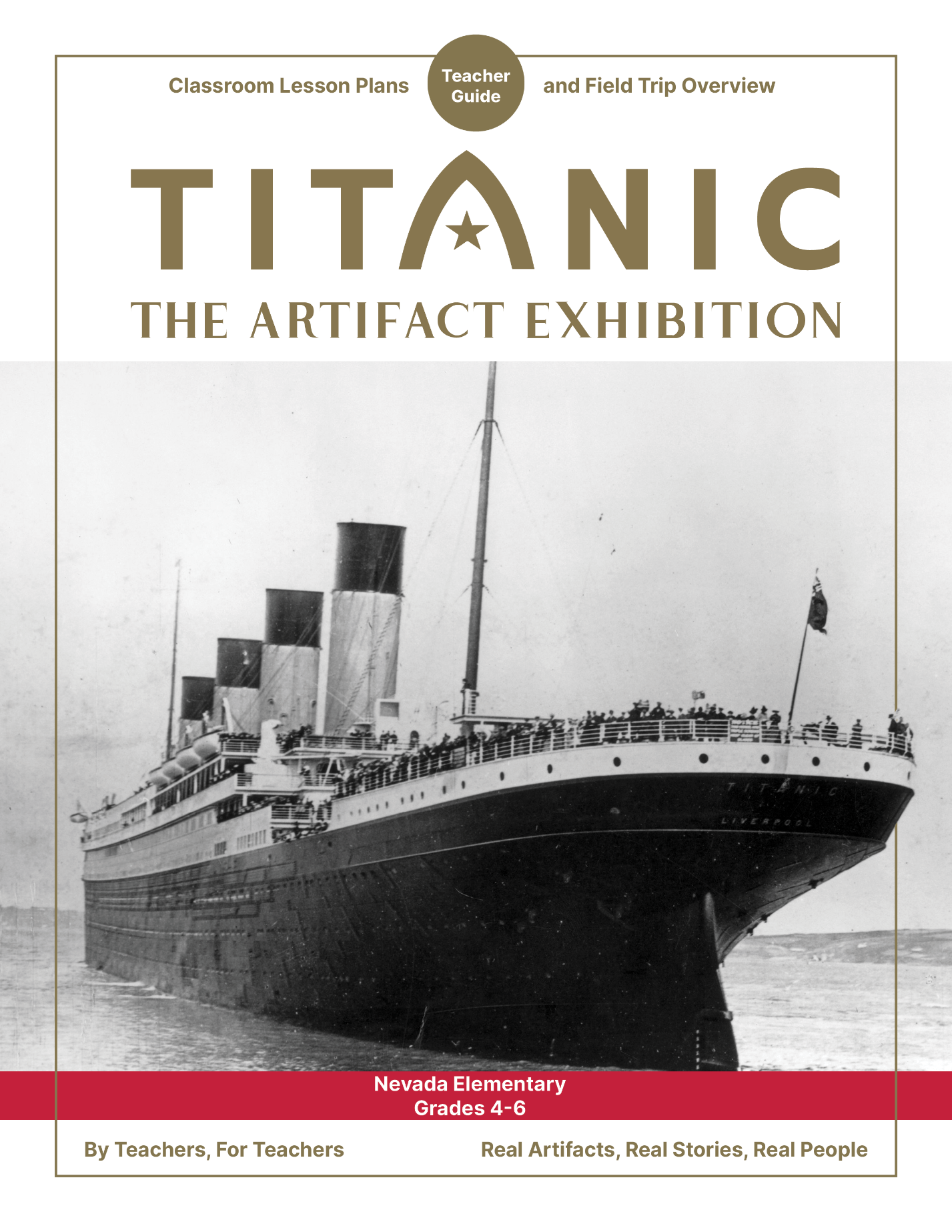


What’s Inside the Guides?
Each Titanic Teacher Guide is structured around 10 consistent themes, carefully chosen to cover the major phases of Titanic’s story. These include:
- Design and Build of the Ship
- Voyage Preparation and Route
- Edwardian Times, Class, and Society
- Life On Board
- Passenger Highlight
- Working on Titanic
- Collision and Sinking
- Worldwide Impact
- Wrecksite, Exploration, and Recovery
- Artifact Conservation, Stewardship, and Exhibitions
While the themes are shared across grade levels, the content is developmentally tailored. For example, the first lesson about the Design and Build of the Ship in the elementary guide introduces Harland & Wolff and White Star Line, while the middle-school version explores Titanic’s stages of construction, and the high school version focuses on the people behind the design and their engineering practices and values. Teachers can select lessons within and across guide levels and still teach a comprehensive history. Whether you want to introduce Titanic in a one-week unit, as a single lesson, or explore it deeply, the guides are fully customizable for your needs.
Built-in Teacher Support
We designed the guides with real teachers in mind, so we incorporated unique features to help make teaching easier. Throughout each lesson, you’ll find:
Main Idea Summaries, marked with a lightbulb icon, provide quick-reference explanations of key historical or scientific contexts within each lesson.
Potential Student Responses, written in handwritten-style type, help teachers predict student answers and serve to guide classroom dialogue.
Quotes from Titanic passengers, crew, historians, researchers, or related figures correspond with lesson themes and can be used as journal prompts, class discussion starters, or as standalone sources for analysis.
All guides include a “Guide at a Glance” to help you navigate the structure, know what to expect, and make the most of the material.
Standards Alignment and Flexibility
All lessons align with national standards and meet the state education standards in Nevada and Florida, where our two permanent exhibition venues are located. At the end of each lesson, you’ll find a list of standards addressed and descriptions of targeted skills.
If you teach in another state, these descriptions make it easy to substitute your own standards or match the lesson to your school district’s learning goals.
The guides also assume access to modern classroom tools, like 1:1 devices, but all activities can be adapted for tech-free classrooms.
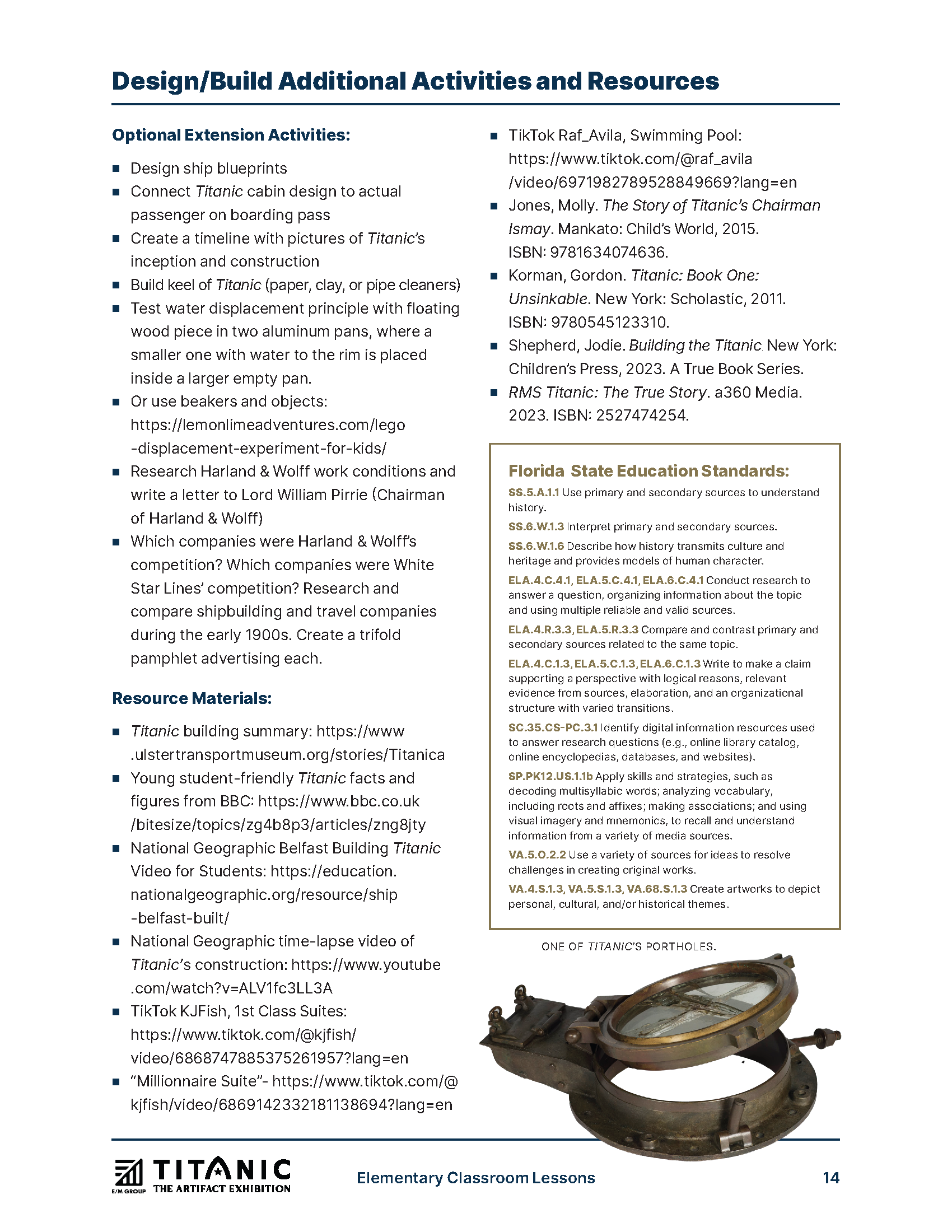
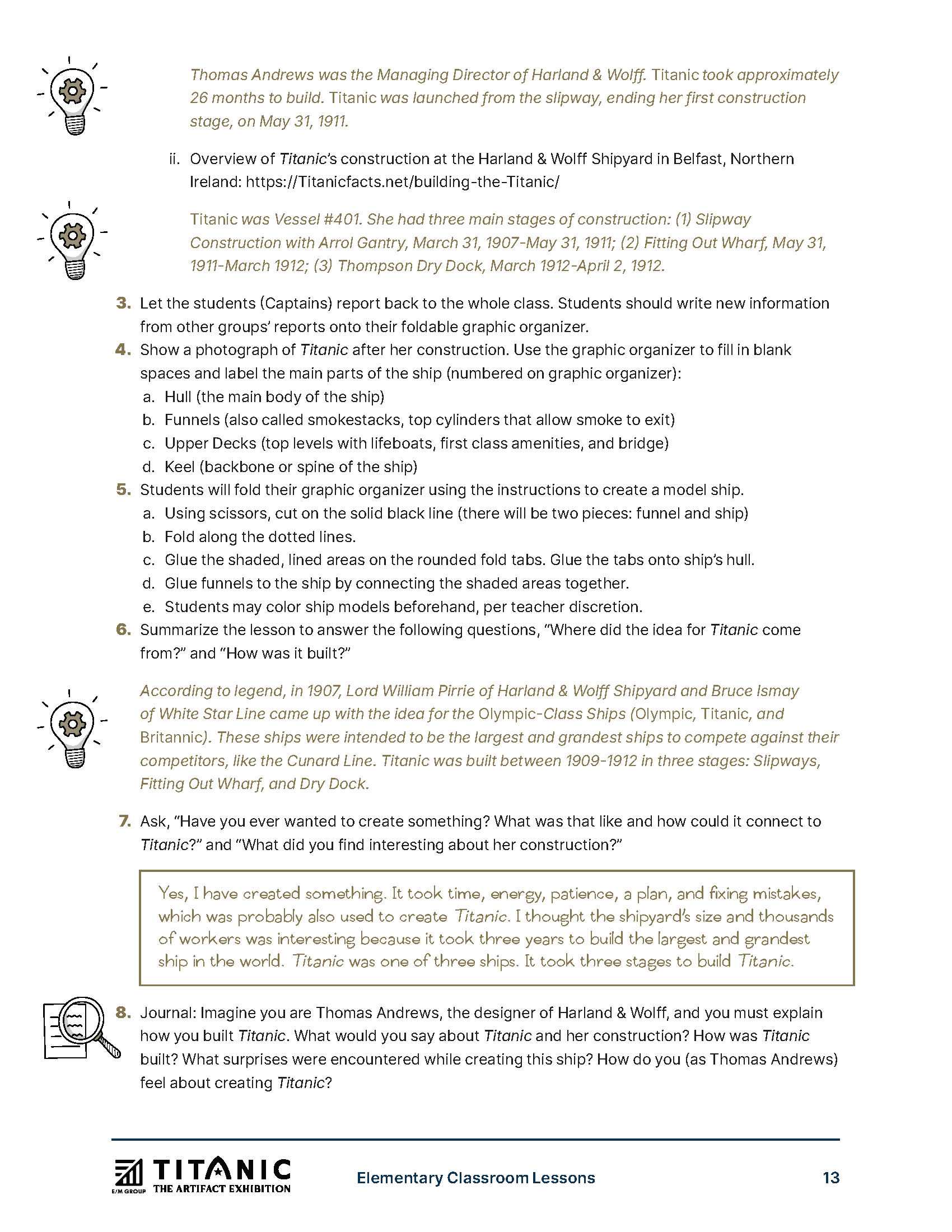
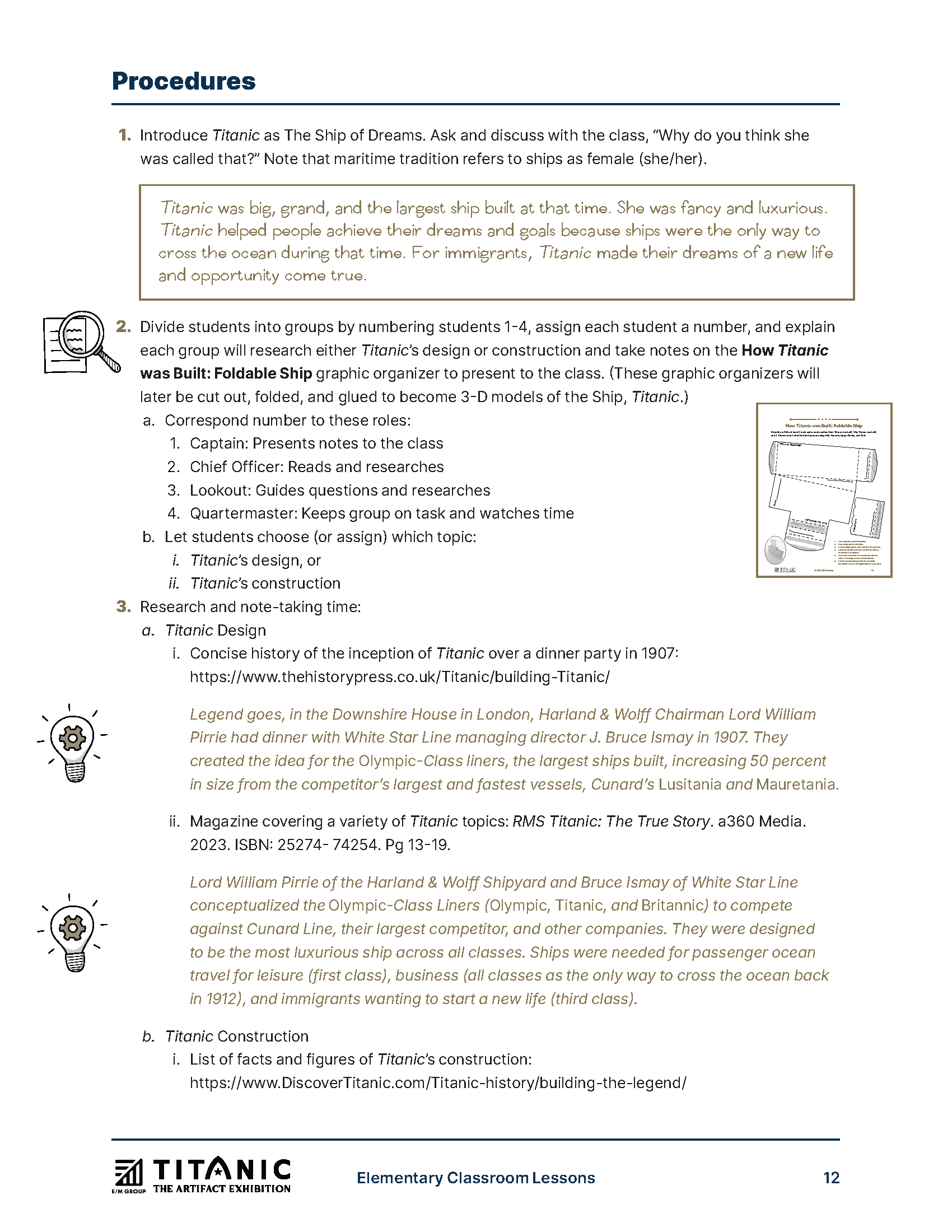
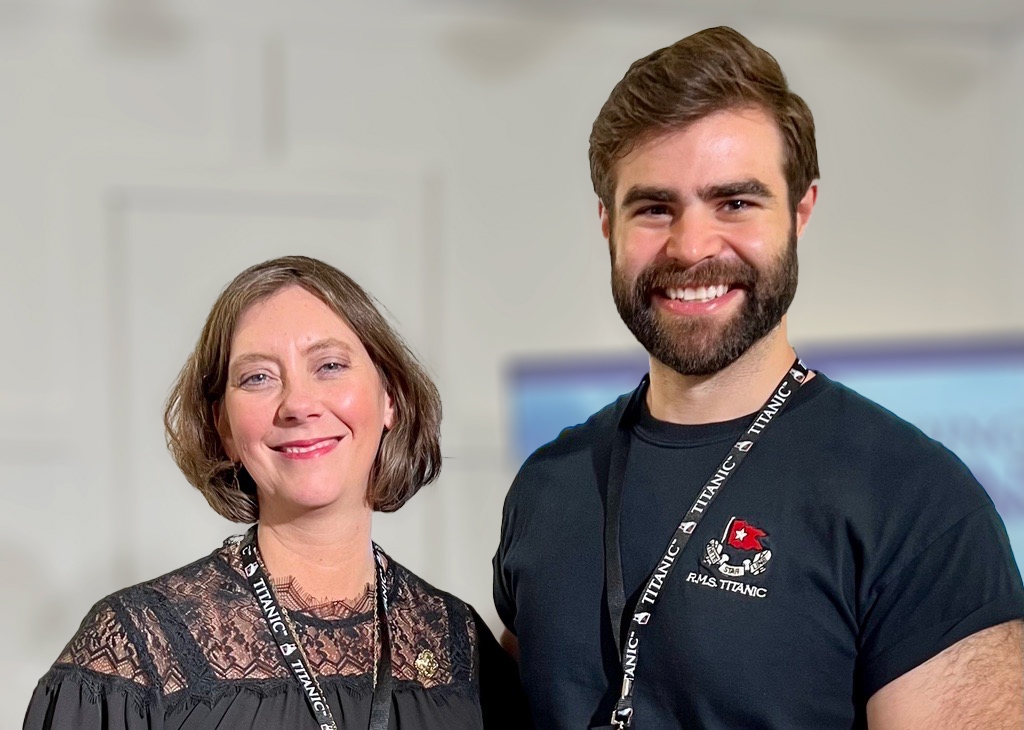
“Sheryl Rinkol and Ross Mumford”
By Teachers, for Teachers
RMST developed the Titanic Teacher Guides as part of our commitment to honoring the Ship, her legacy, and all those on board.
These guides were written by two former educators: Sheryl Rinkol, former Director of Education and Engagement at RMS Titanic, Inc. (RMST), and Ross Mumford, Titanic Researcher and Content Specialist at RMST. With experience in both K–12 and higher education, Sheryl and Ross brought their passion for Titanic and their understanding of classroom realities to every page.
Sheryl and Ross worked closely with graphic designers at Mayfly Book Design and MeisterWorks Graphic Design to turn their ideas into a visually engaging, easy-to-navigate curriculum set: the world’s first comprehensive Titanic curriculum. More importantly, they collaborated with teachers across the country through in-person events and focus groups to refine every detail.
Teacher Nights were held at RMST’s two permanent TITANIC: The Artifact Exhibitions in Orlando and Las Vegas to gather feedback from educators across grade levels and subject areas. Participants included public and private school teachers, homeschool educators, special education instructors, subject-matter instructional specialists, administrators, and others. Their valuable feedback shaped the content, structure, and accessibility of each guide. Thank you to every teacher who shared their time and expertise! You made this possible.
The result? Over 300 pages of teacher-reviewed, student-focused lesson plans, handouts, printables, and extension activities, completely free and available to download.
A Story Worth Teaching
Titanic is more than just a ship. It’s a story of ambition, innovation, inequality, courage, and loss. It’s a touchstone in world history and a mirror for the present. Within that story are lessons of humanity, responsibility, and remembrance.
We challenge misinformation. We ground what is sensationalized and romanticized back in reality. We encourage students to think and feel deeply. We give them space to connect with the past and reflect on the future.
Titanic resonates. It sticks. It teaches.
Ready to Dive In?
Teaching Titanic is more than imparting a lesson; it’s stewardship. Every time you teach about Titanic, you help ensure her legacy, honor the 2,208 people on board, and connect students with history in a meaningful, human way.
We invite you to download the free Titanic Teacher Guide that best fits your classroom needs.
Thank you, teachers, for inspiring curiosity, compassion, and critical thinking and for helping keep Titanic’s memory alive for the next generation.
PS: Send us a direct message sharing your photos and stories of teaching Titanic for a chance to be featured on our social media channels! Reach out on Instagram (@rmstitanicinc) or Facebook (rmstitanicinc).
